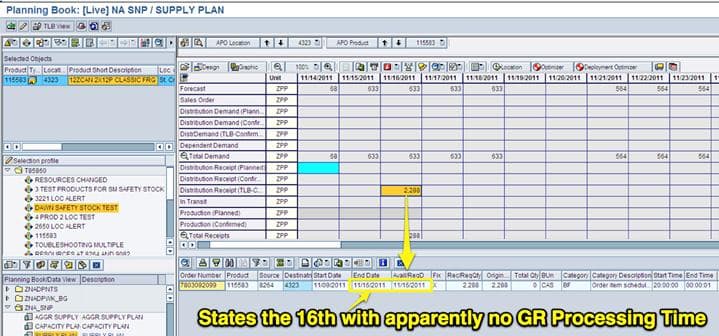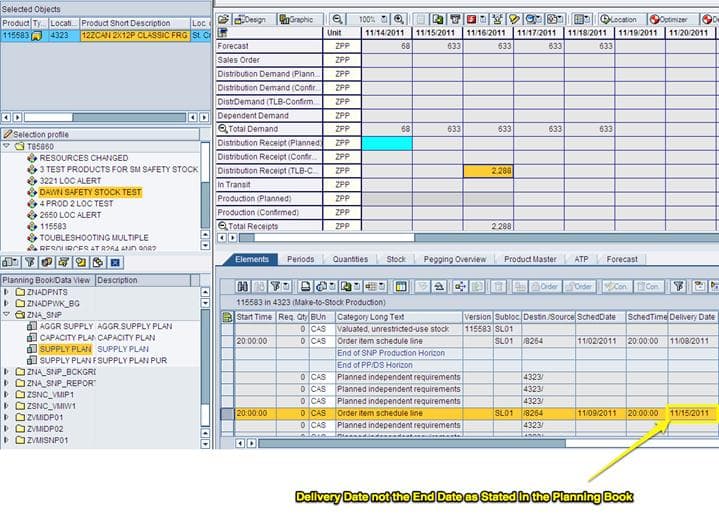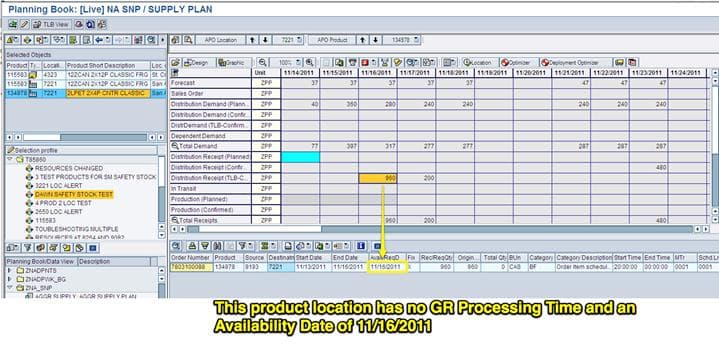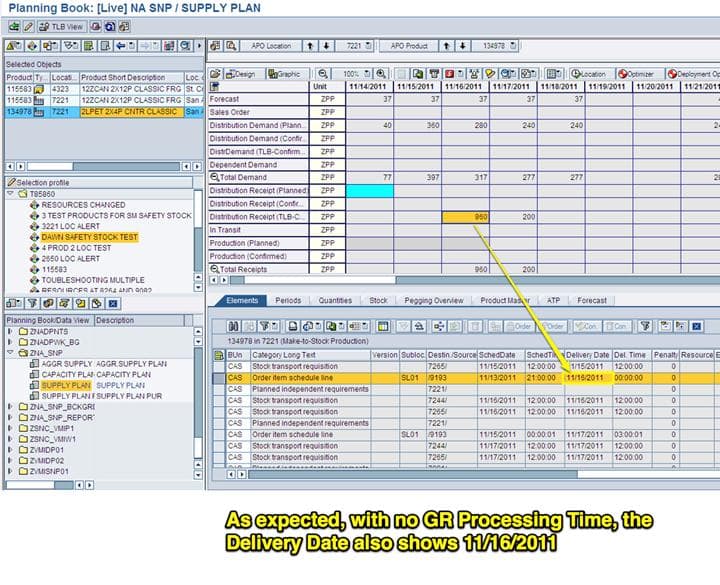Understanding the GR Processing Time Planning Book Discrepancy
Executive Summary
- Cases Where There Is No GR Processing Time
- Intermediate Resolution
Introduction
This document is designed to explain how the planning book displays the GR processing time and how to work around it. This issue arose when Dawn Richmond pointed out that there was no discrepancy in the Planning Book Between the End Date and the Avail/Req Date. This seemed strange as this product did, in fact, have a one day GR Processing Time.
Our References for This Article
If you want to see our references for this article and other related Brightwork articles, see this link.
Notice of Lack of Financial Bias: We have no financial ties to SAP or any other entity mentioned in this article.
The Concept
The concept is that there should be a differential of whatever the difference is in GR Processing Time between these two dates. An example of how quickly this can confuse planners is listed below.

However, when one checks the Product View, it can be seen that the Delivery Date (SAP does not use the same terminology between the Planning Book and the Product View, so the field names must be translated) is not 11/16/2011 as stated in the Planning Book. In fact, in the Product View, the Delivery date for this Confirmed Purchase Order is 11/15/2011.
One day before either the End Date or the Avail/Req Date in the Planning Book, the GR Processing Time Duration. (The Scheduled Time of 20:00:00 is not the received time but instead translates to the “Start Time” in the Planning Book, which it matches.)
This can be seen in the screenshot below.

Cases Where There Is No GR Processing Time
A test for this how correct the explanation described above actually is could be whether the Availability Date in the Planning Book and the Delivery Date in the Product View match when there is no GR Processing Time entered in the Product Location, Master. The screenshots below show this test.
 Now we will need to go and check the Product View.
Now we will need to go and check the Product View.

Therefore the rule is consistent with and without GR Processing Times. It also means that subtracting the Delivery Date in the Product View from either the End Date or Avail/ReqDate from the Planning Book can provide the GR Processing Time.
Intermediate Resolution
It would be desirable if the Planning Book dates operated to reflect the GR Processing Time. However, the GR Processing Date can be easily found without going to the Product Location Master by right mouse clicking and find the Product View from within the Planning Book. This needs to be explained presently and in the future as new planners are added and are the purpose of this document. Logically, however, the Planning Book End Date and Avail/ReqDate should reflect the GR Processing Time.
Conclusion
Currently, the GR Processing Time is calculating correctly in the Product View but not in the Planning Book. This is consistent with the experience that the Product View is more reliable regarding the representation of dates and even quantities than the Planning Book (for instance, factions of demand display in the Product View, but not the Planning Book.)
This document has explained how to use the Product View in combination with the Planning Book to understand when a product is received versus when it is available for use.